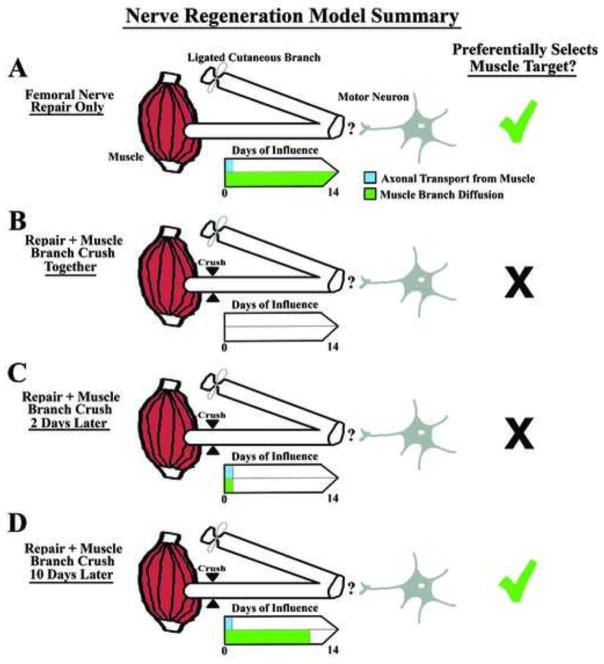Figure 7.
Model Summary. This drawing highlights the “days of influence” of axonal transport (that continues in a denervated nerve for approximately two days) versus possible diffusion driven movement of molecules from muscle. (A) When both axonal transport and diffusion driven movement are allowed to take place during the two week survival period, regenerating motor neurons preferentially project to the terminal muscle branch, showing appropriate regeneration accuracy as indicated by the green check mark. (B) A distal muscle branch crush applied coincident with parent femoral nerve repair blocks both axonal transport and diffusion driven movement, and blocks regeneration accuracy. This suggests the requirement for one or both of these ongoing mechanisms for regeneration accuracy. (C) A distal muscle branch crush applied two days after parent femoral nerve repair also blocks regeneration accuracy and suggests that the initial two days of axonal transport and/or diffusion driven movement are not sufficient to result in regeneration accuracy. (D) A distal muscle branch crush applied 10 days after parent femoral nerve repair results in regeneration accuracy being restored and suggests that ongoing diffusion driven movement in the denervated nerve is critical for this process.

